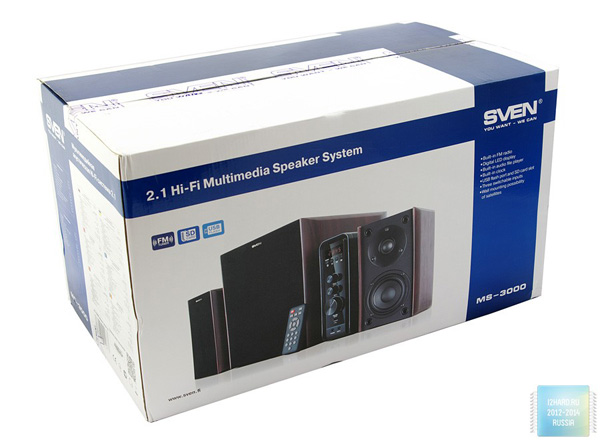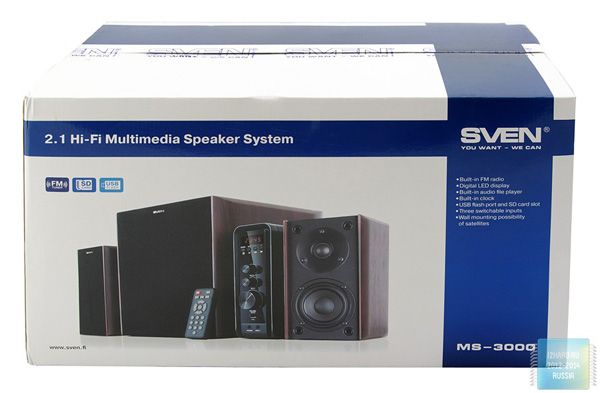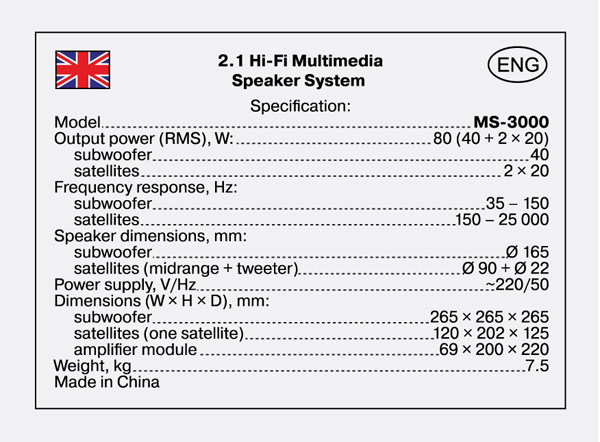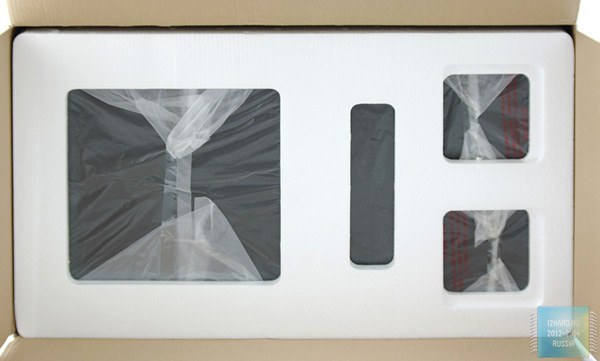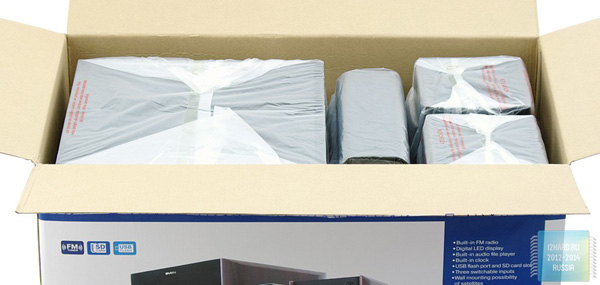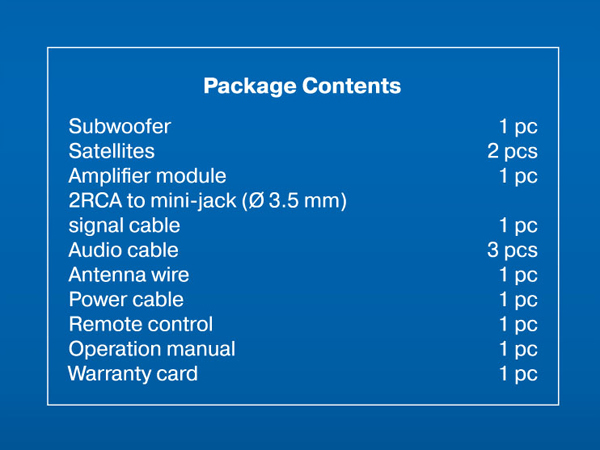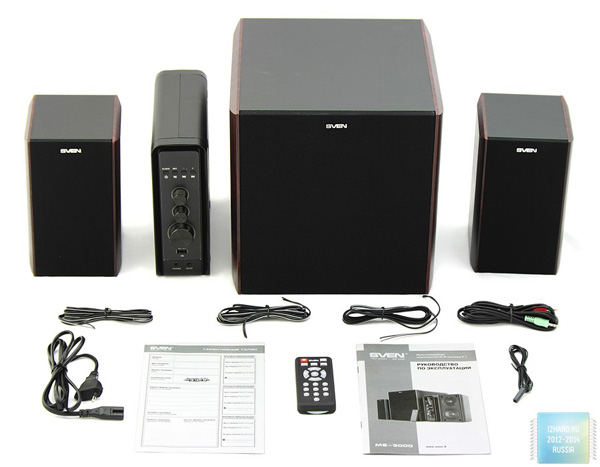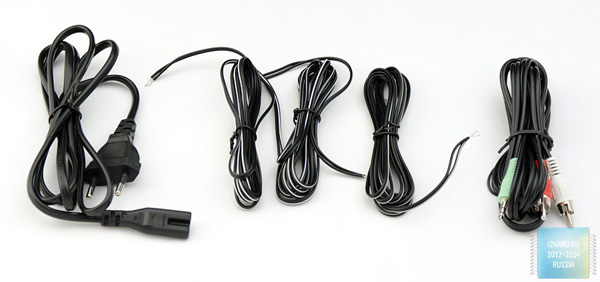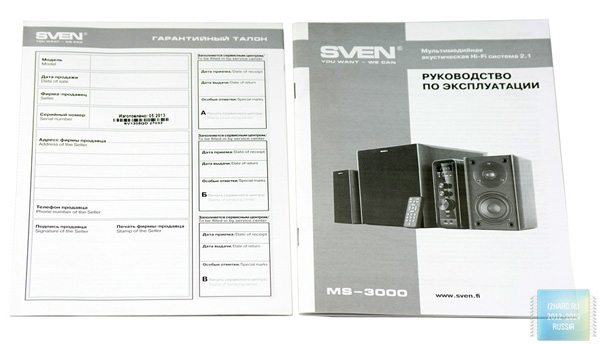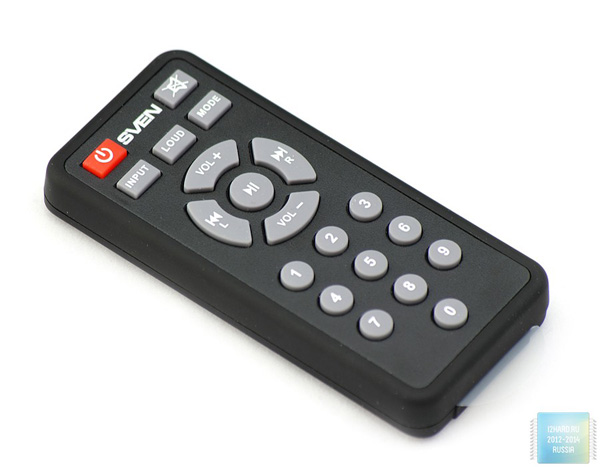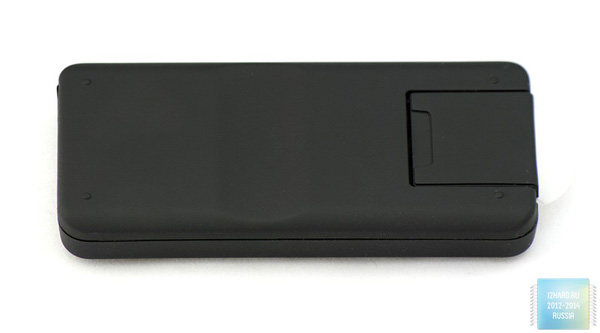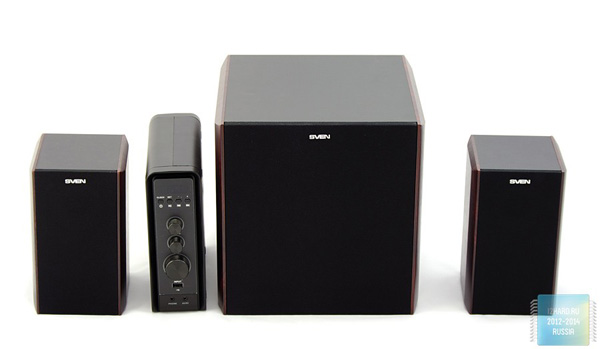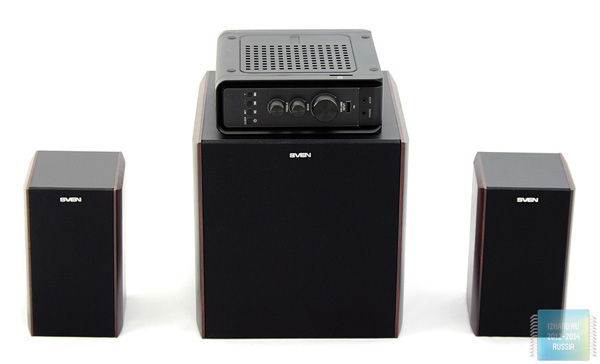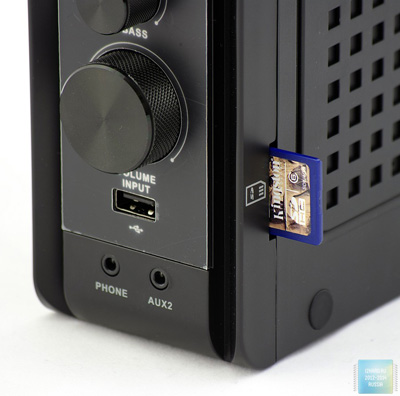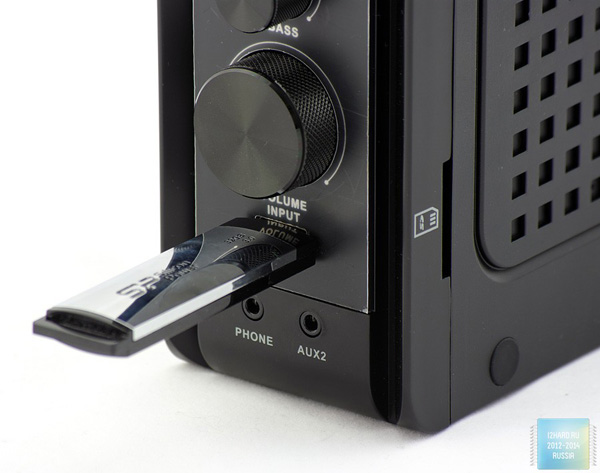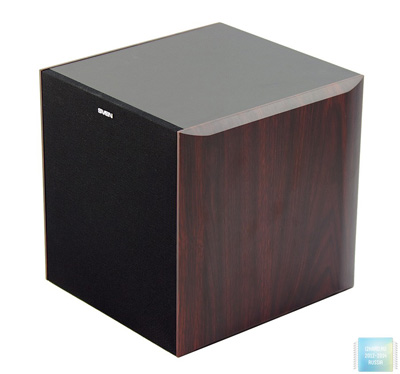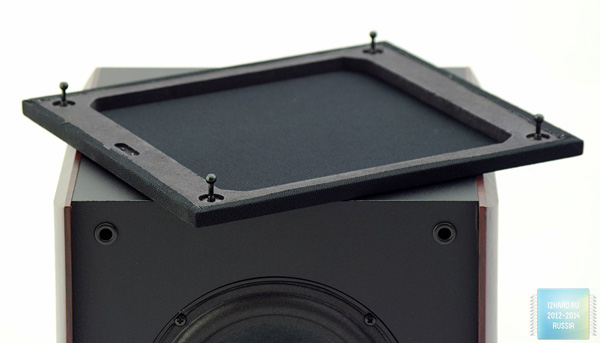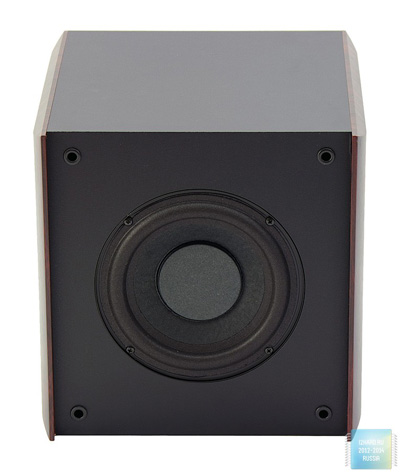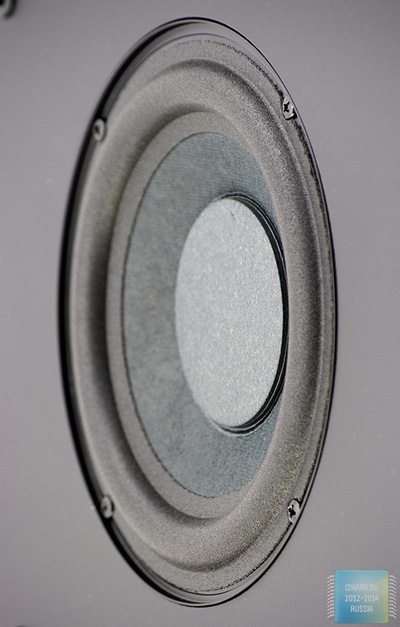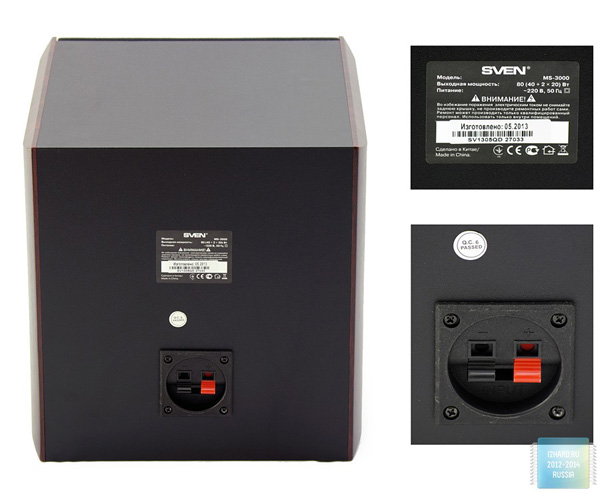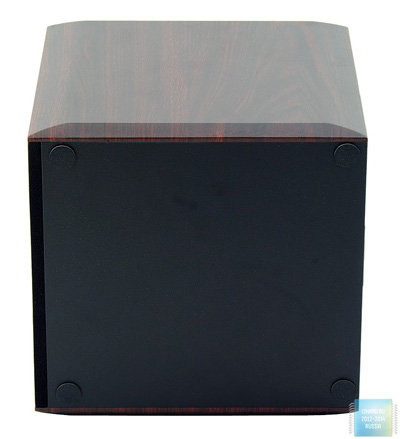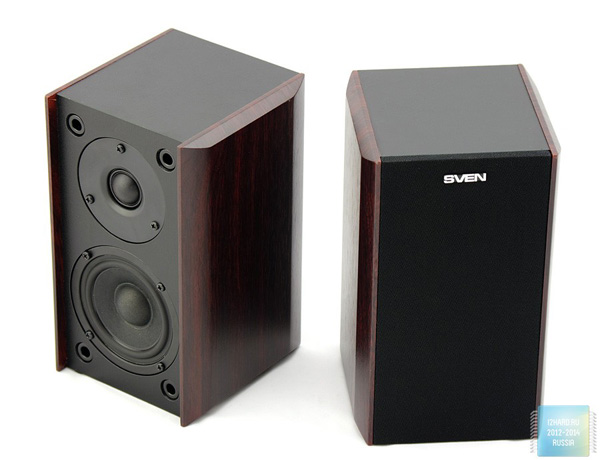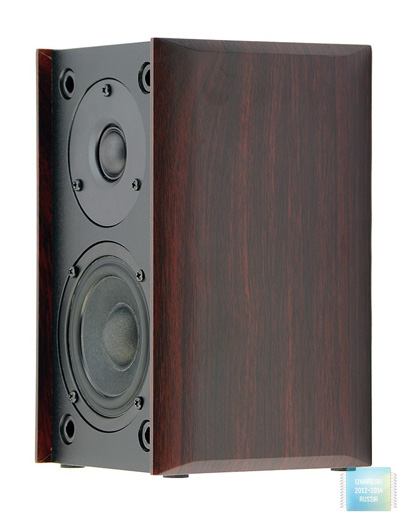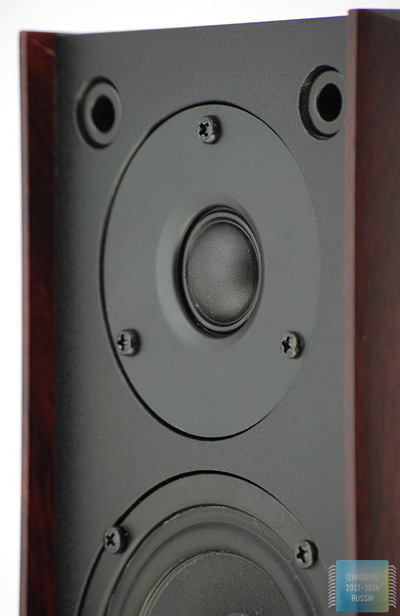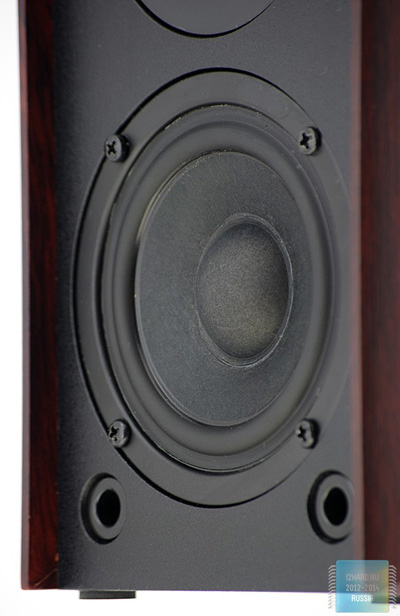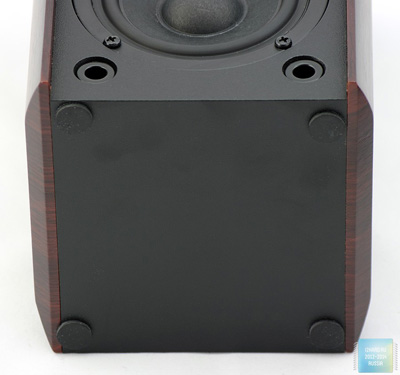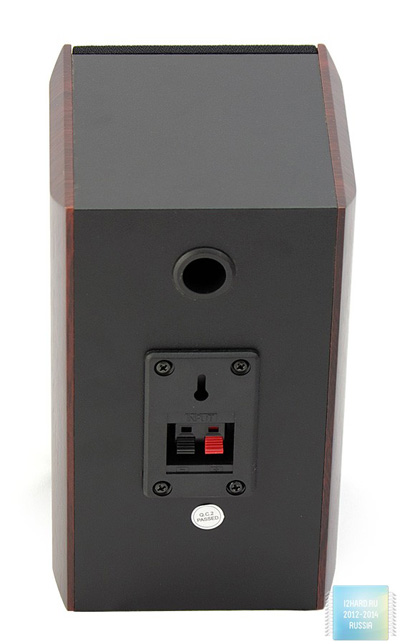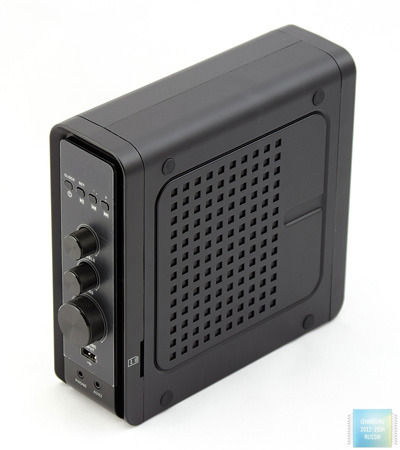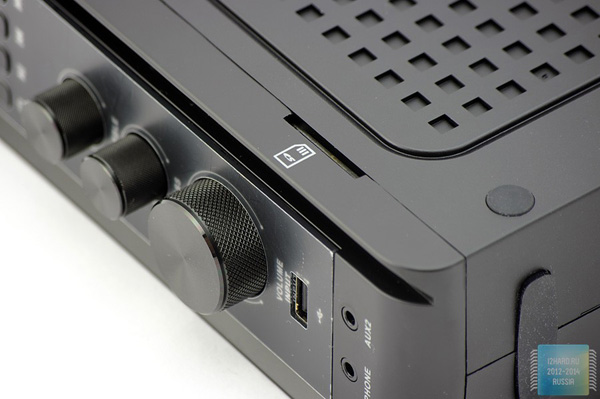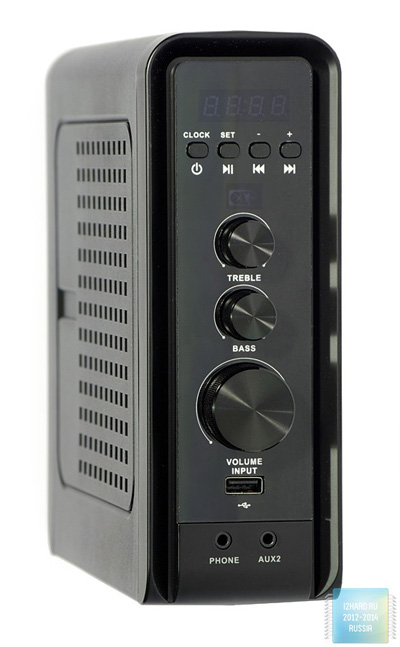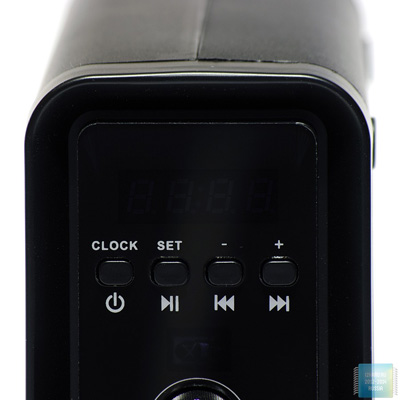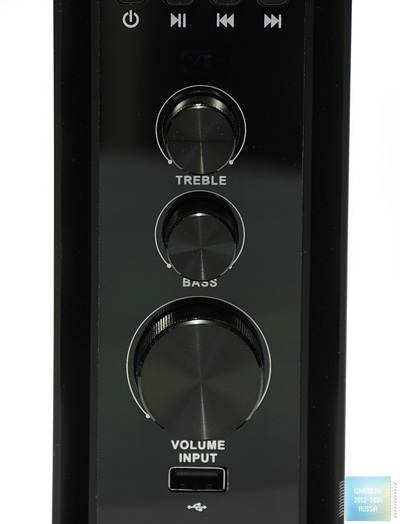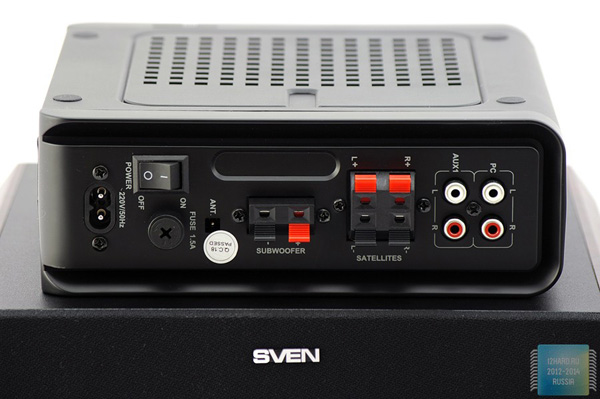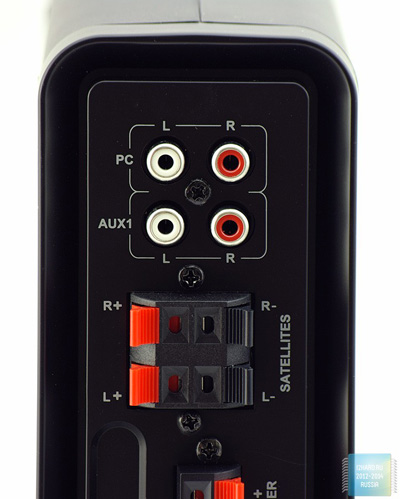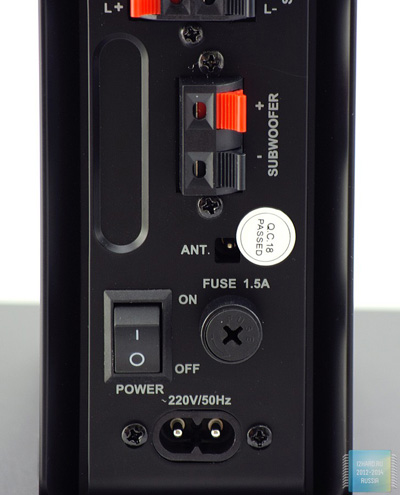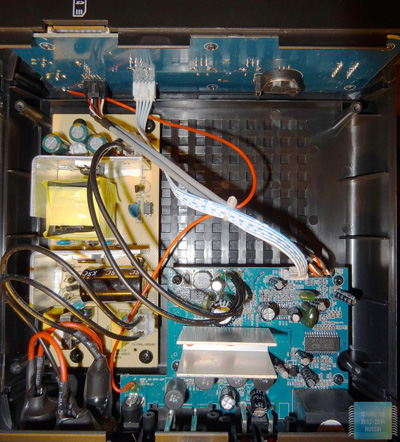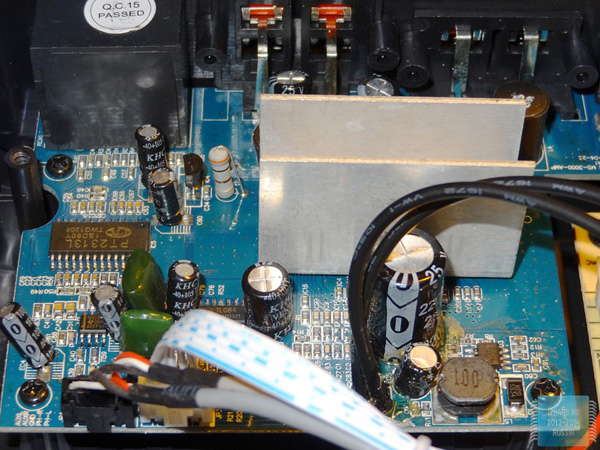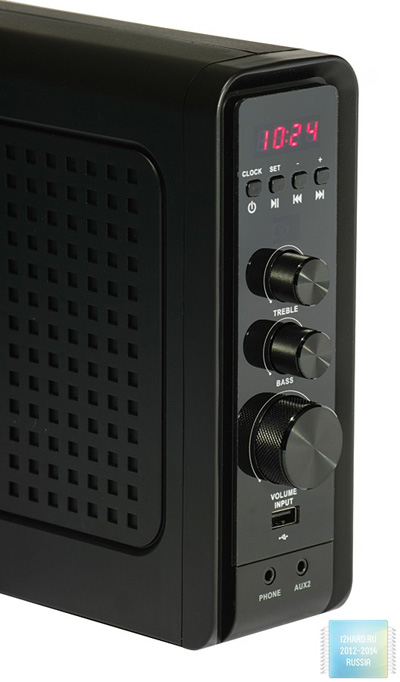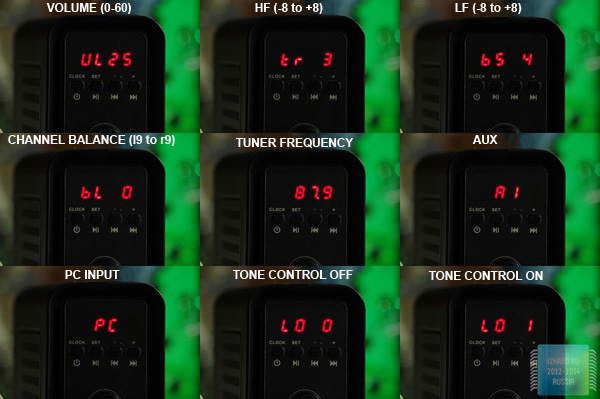Until quite recently a cassette tape recorder, tuner, compact disk player, speaker systems and the remote control were the indispensable attributes of household speaker systems. For the most they were musical centers of different producers intended for the most diverse wallet of consumers, from the most affordable to exclusive. But time flies, technologies develop... Connoisseurs of the most qualitative sound settled for a long time and firmly in the Hi-Fi and Hi-End camp of modular systems, but what did fall to the mass-market user? Cassette tape recorders were relegated to oblivion, but a vacant niche was filled by musical centers with the support of sound files playing in digital formats and media players with multimedia speakers.
But the multimedia speakers proper do not stand still; they acquire new functions and capabilities. Today you will become familiar with an active speaker multimedia system, namely, SVEN MS-3000. It is a so-called system of 2.1 type, i.e. two stereo channels and a subwoofer, at that, speakers are actually passive, but an amplifier is located in a separate module being controlled with the help of a wireless remote control. SVEN MS-3000 system is equipped with additional functions: FM tuner, media player and clock. In fact, thanks to these functions it is similar to a musical center. Added to everything else, the producer promises the Hi-Fi sounding.
SVEN Company was registered in 1991. Currently, it has its official missions in 50 countries of the world. SVEN Company is a multinational structure concentrated on development and production of electrical engineering equipment of many types. Multimedia and portable speaker systems hold a central position among them, as well as computer periphery devices, such as keyboards, headphones and headsets.
The company production capacities are concentrated in Taiwan and in PRC, due to which the company can offer competitive prices to consumers. That is the reason that SVEN Company’s products are in constant demand for customers. Another indubitable advantage for consumers is the fact that more than 200 official service centers have been opened in the Russian Federation territory.
Package content
SVEN MS-3000 speaker system is packed in a strong carton with traditional blue-white company design. Naturally, there are color photos of the product on it. It can be admitted that the package design is very appropriate. The carton is very weighty, 9 kg for a certainty.
There are photos on two main sides, as well as additional functional features description in Russian and English, about which we have already said above.
Package content and technical specifications are provided on one of the carton butt ends.
There are several photos of “titbits” of SVEN MS-3000 on the other butt end, the product serial number and information about its importer.
After opening the carton top you can see that the speaker system is safely fixed in foam plastic pallets, in spite of quite dense placing of its components.
The speakers and amplifier unit are thoroughly wrapped in transporting film, which must guarantee excellent safety of the product appearance on delivery to a customer.
Appearance and package content
The producer providently placed the package content description on the carton. It is very convenient, we need not open the package to know what must be inside.
When the film has been removed from all the units and cables, we have such a very attractive package before us.
Let us go once more over components. As a preliminary – cables. The antenna wire for FM tuner was not shown on the photo. We have: a power cable, three cables 2 meters long to connect satellite speakers to the subwoofer, and 3.5 mm–2 RCA mini-jack cable 1.5 meter long to provide signal from a sound source of to the amplifier unit.
We would like that 3.5 mm–2 RCA mini-jack cable would be longer, for example two or even three meters, it would make to place the amplifier unit more conveniently, but we say thanks for this cable as well.
The User’s Manual and warranty card with the serial number. The User’s Manual expounds everything in several languages, including Russian, as well as there is also a connection diagram of speakers to a sound signal sources.
The remote control is made of black plastic with the “soft touch” coverage; therefore it does not slip in hands, it is quite compact and easy-to-use. Grey rubber buttons are pressed smoothly. The ON/OFF button is red. Practically all functions for remote control of the speaker system are available on the remote control. The remote control is powered by CR2025H lithium battery, and there is a plastic insulating gasket in the battery compartment to prevent the battery discharge during warehouse storage. Before using the remote control you should pull out this gasket holding a special lug. Such an analogue of the safety pin in a grenade.
There is a small hollow for the index finger on the rear side, which facilitates its keeping.
SVEN MS-3000 consists of two satellite speakers, subwoofer and amplifier unit. Speaker cases are made of MDF covered with cherry-tree veneer sheet. The quality of case manufacture does not give rise to complaints – there are neither chinks nor adhesive stains.
The amplifier unit is designed for operation in vertical position, but it can be placed horizontally as well if desired, it has small rubber legs for this purpose.
Though you will not be able to use the SD card when the amplifier in this position, because it goes too much beyond the case verges.
But a USB flash memory is inserted on the front panel, so the access to the USB port is always open.
The subwoofer represents a hermetically closed cube with the rib length equal to 265 mm, which, nevertheless, does not jingle during operation. An aperture for the phase inverter is not envisaged in it.
At the front the subwoofer loudspeaker is closed with a decorative acoustextile net, it can be removed easily.
A woofer has a cone 165 mm in diameter. Maybe it not too much, but it is quite sufficient for the adequate reproduction of the low-frequency constituent of sound signal spectrum.
If you look closely to the loudspeaker, then a thick cardboard round object in the dynamic head center catches the eye. This seems entirely possible that its purpose to decrease the lowest reproducible frequency of the loudspeaker and at the same time to increase the system persistence. The loudspeaker cone is made of the dense impregnated cloth, but the external suspension is made of polyurethane. Woofer head specifications: resistance is 8 ohm, power is 36 W.
There are spring-load terminals to connect a cable from the amplifier unit on the subwoofer rear side. Standard two-meter cables, of course, are thin and cheap, but they are fixed in terminals confidently. It is practically the universally recognized practice to provide cost effective speakers and amplifiers with clamping terminals. It is inexpensively and quite reliably. Besides terminals there is the table with the model name, rated capacity and a month of production on the subwoofer rear side.
The subwoofer case has four rubber legs on its bottom, which decrease the parasite vibration transmission of its case to the surface where it will be placed.
Dimensions of satellite speakers are very compact, but they look very beautifully. The front grid can be also taken off easily if desired.
Maybe, somebody will like more such a placement.
The tweeter dome is made of impregnated silk, it diameter is equal to 22 mm. There is a small table on its head with marked specifications: 6 ohm and 20 W, but I am not confident at all that it will sustain the attached 20 W of power. The head is connected to the circuit in succession through 2.2 μF paper condenser with 100 V operating voltage.
The squawker is also made of special impregnated fabric, its cone diameter is equal to 90 mm. The squawker head specifications: impedance is 4 ohm and power is 10 W.
At the bottom, satellite speakers lean, as the subwoofer, against the surface with four soft rubber legs.
Satellite speakers have clamping terminals for wires, small phase inverter aperture and special assembling opening for a screw head for wall mounting on their rear side. But such type of mounting prevents the phase inverter aperture functioning.
We are coming now to consideration of the amplifier unit of SVEN MS-3000 speaker system.
It is assembled in the black mat plastic case; the unit is surprisingly light for its specifications. Small squares on the case sides do play not only the decorative role, but they also remove that small heat through chinks, which is generated during the unit operation.
There is a SD card slot on the left side (if to look at the unit from the front panel side). The producer declared in the User’s Manual the support of MP3 files from it and USB drives, but we determined experimentally that it is possible to play the WAV uncompressed format. FLAC, APE and OGG files are not supported.
The amplifier unit front side is made of glossy plastic; that is why it is covered with the adhesive protective film. Beneath it you can find a four-digit LED indicator and IR receiver for the remote control. Knobs for tone and volume control have hatching; therefore they do not slip in fingers. All knobs rotate with tactile clicks, which are similar to mouse scroll wheel clicks. Knob rotation stops are not envisaged; probably tone and volume are controlled with microswitches, but not potentiometers.
There are four buttons in the upper part of the front panel, with their help you can set the clock, to switch on or off the speaker system (to be more exact to put it into Stand By mode) and to control tracks during playing musical files from a carrier.
There is a USB port beneath the big volume control knob, and lower you can find the headphones jack and the second AUX2 linear input, designed mainly for connection of portable devices such as media players or smartphones.
Amplifier unit rear view.
RCA jacks of PC and AUX1 linear inputs are on the top. PC input, as it is clear, is designed for the sound supply from the sound card output of a computer, and to the second input, for example, you can supply sound from the headphones output of a TV-set or CD player. Terminal blocks for connection of wires of satellite speakers are located lower.
Terminals to connect the subwoofer are located even lower. All terminals have colored markings to avoid wrong phasing during connection. Typically, a wire with white longitudinal stripe is connected to the black terminal (negative). You can see a small hole under terminals to connect a standard FM antenna. A toggle to switch the mains supply, supply-line fuse and power cable jack are located even lower. Everything is as simple as possible and easy to understand.
Amplifier unit from the inside
We were not able to overcome our curiosity and looked inside of the amplifier unit, the more so because the access to the circuit was not difficult.
There are three components inside. The first one is a pulse power supply unit, the second component is an amplifier and commutation board, the third one is a board, where the clock, tuner, player of media files and infrared detector are located.
As can be seen, the clock is equipped with an independent supply source based on CR2032 lithium battery and it is correct very much for conditions when the operation of domestic electric mains is not stable. In appearance the power unit is not too complicated, but, nevertheless, it properly supplies stabilized voltage for the whole circuit.
On the amplifier board you can see the microcircuit of PT2313T four-channel digital audio processor produced by Princeton Technology Company, which is responsible for the control of amplification, tone and commutation of signals from different sources. Two TPA3123D2 microcircuits, which operate in the D pulse mode with high coefficient of efficiency, hide under not very heavy cooler. That is the reason that the cooler is such small. Each TPA3123D2 microcircuit is able to provide for two 4 ohm channels the load up to 25 W per channel, when the supply voltage is 27 V or up to 20 W, when the supply voltage is 24 V, though the microcircuit proper operates in the supply voltage range from 10 to 30 V. One of the microcircuits operates with the standard two-channel connection, and second one in the bridged mode is the subwoofer amplifier providing the total output power up to 40 W.
TPA3123D2 microcircuit with the standard connection of the total nonlinear distortion factor + noise with 4 Ohm loading and 10 W output power does not exceed 0.08%, and the signal-to-noise ratio with the maximum power at the nonlinear distortion factor and noise < 1% and the frequency equal to 1 kHz makes about 99 dB. They are quite good indices for cost effective speakers.
In spite of the fact that the whole electronics operates perfectly, you cannot say that the assembly of the power amplifier board is very thorough. There are adhesive stains there; some of electrolytic capacitors are assembled mechanically crookedly.
Connection and testing
The speaker system is connected very easy, even without reading the User’s Manual. Only when we needed to know something specific, for example, a tuner setting, we had to read it.
When the speaker system is switched on, in the Stand By mode, its indicator starts to display the clock readout immediately. The separator colon blinks every one second.
We will not conceal that before the meeting with SVEN MS-3000 speaker system we have read the customer feedback about it in the internet and somebody complained about unwanted sounds in the amplifying track. But our specimen turned out to be deprived of any similar faults, only in loudspeakers of satellites we heard a weak rustle generated by the power unit, which is not perceptible even in the complete silence almost at the distance approximately half a meter, we say nothing about the music listening.
The system was tested by listening the reproduced sound from the built-in tuner, built-in player of sound files from USB drives and sound supply from a system unit equipped with the Creative Audigy 2 SB0240 sound card.
So, the speaker system is switched on and off with a very insignificant transient process. There were no problems at all with the built-in tuner setting, only in the FM lower range it found several parasite harmonics which were taken for radio stations. After setting completion, radio stations can be switched over with the help of buttons to next tracks on the control panel. We can say that the tuner sound was quite qualitative, but if radio station broadcasting is poor, then you will do nothing.
Musical files of MP3 and WAV from USB drives are played without problems, the sound quality there is very good also. The noise in low places of phonograms is caused by the initial file quality only. You can use FAT32/FAT16 file system only, but the system does not identify flash drives formatted in NTFS or exFAT and it generates “Err” signal to the indicator.
During testing one “bug” was revealed. If during file playing from a flash drive you touch the volume control knob with your hand, then the playing can be interrupted for a fraction of an instant and then it will proceed just as if nothing had happened. At that this effect does not depend on that fact you turn the knob or touch it only. Maybe it is happened due to noise pickup or static charge, which can accumulate on the human body.
By the way, the speaker system does not memorize volume and tone setting values after the complete disconnection from the power supply. The volume value in this case is set on 25 (of 60), and the tone and balance are reset to the average value 0. If the speaker system is switched to the “Stand By” mode during a file playing, then, when you will turn it on again, the system starts playing automatically the same track, which was interrupted.
The balance is regulated from 9l to 9r with the average value 0; we did not need to regulate it. The tone is controlled from -8 to +8 with the average value 0. The tone control mode increases the bass level considerably, but during playing some phonograms it can result in something like muttering, which can be got rid of by setting the low frequency tone level to 0. By and large we liked the tone control mode, although it can be named as aggressive one.
We have also noticed the following feature: when the volume level is set to a minimum value, the sound from speakers continues very quietly and stops only when the “Mute” mode is switched on. If after that you touch a satellite loudspeaker with your ear, you will hear the sound a little bit all the same. We would not name it as a shortcoming, it is feature only, which should be mentioned.
Here we have examples of the indicator readings in different modes.
Now we discuss our listening impressions from an external source (Creative Audigy 2). We should say, in order to accelerate the system through a linear input, we have had to set 100% levels of mixers of the sound card output and the player program. Other speaker systems in the similar connection mode usually have higher input sensitivity (we have also had to increase the signal level at the headphones output of TV-set).
No unwanted sounds were noticed in the sound section with the availability of qualitative phonogram sources. The sound is reproduced naturally and softly with expressive low frequencies. High frequencies are clear and crystal, the only one bad thing that the tone control knob practically simultaneously regulates middle and high frequencies.
The speaker system demonstrated practically the full “pantophagy” of musical genres, although it prefers most of all the instrumental music, pop music, blues and jazz. Even with quite large volume the speakers sound not bad, the detail of the sound picture is worsened a little bit only.
We have listened to the following albums:
- Eddie Dunstedter – Christmas Candy in MP3 format (general impression is excellent, the sound of hand bells is just magical!),
- Klaus Wunderlich – Evergreens Vol. 2 in APE format (wonderful sound),
- Ella Fitzgefald – Ella Abraca Jobim, CDA (general impression is excellent, but there was not enough transparence and high frequencies here and there, due to which there was an impression that the album sounding was not exposed in large measure. We liked most of all the sounding of compositions of Wave and Quiet Nights of Quiet Stars most pleased (Corcovado). The vocal in every composition sounded very clear and sincerely),
- Chicago – Night & Day: Big Band, CDA (the album sounding in these speaker systems was as average and deprived of any so-called “audio delicacies"),
- Marc Almond – Treasure Box, CDA (the listening, to be honest, did not gladden our hearts),
- Diana Krall – The Look of Love, CDA (the good sounding, but we had to decrease the low frequency level, when the tone control mode was switched on to -3),
- Laura Fygi – The Very Best Time Of Year, CDA (the general sounding impression is good, but maybe there were not enough high frequencies, the basses are deep, the vocal is clear and unobtrusive, we may say we liked most of all the sounding of composition Christmas Morning).
Retro records are played very naturally and they remind the sounding of a tube radio.
The following test CDs were listened as well:
Denon Audio Technical CD.
Most of all we liked the playing of the strings, the piano and harpsichord on its tracks and the sounding of drums, in general, was beyond praise.
Stereophile Test CD 2.
The percussions, including cymbals, flute, piano – the excellent sounding, wind instruments sounded clear, the organ sounded good, but low-frequency constituents of the sound spectrum went out in the foreground, due to which it was necessary to decrease of the bass level.
Japan Audio Society — Impact.
- thunder sounding is deep and realistic,
- car engines sounding is perfect, large drums are perfect,
- Boeing 747 engines sounding forced us to shudder, the vocal sounds perfectly (soprano of Y. Samejima),
- flute, oboe, tenor saxophone – good,
- violin – something was not enough in its sounding , maybe the power and transparency of high frequencies,
- violoncello, contrabass – excellent sounding,
- piano is bright and visible,
- harpsichord is nice and thin,
- harp – the sound is tender and gentle,
- opera – the vocal is very nice, but in the prelude the sound of many instruments goes to the jumble, moreover, you can feel rather small overload capacity and dynamic reserve,
- the applauses are heard just as applauses, but not the rain.
Marantz Hi-End Audiophile Test Demo SACD.
- blues is very realistic,
- acoustic guitar, jazz are perfect,
- violin – again there is not enough liveliness, we have had to increase the Treble knob to the maximum level,
- accordion is nice, but without liveliness,
- organ is perfect again, but it is necessary to control basses,
- brass band – basses are in the foreground, basses have to be increased to the maximum level, when the tone control mode is switched off.
- due to the sound of turbo-prop airplane engines everything resonates in the room,
- dixieland – the sound is not very live, there is no dynamics in it,
- drums – fine,
- light music orchestra – the sound is quite adequate,
- piano –not bad again,
- acoustic guitar – perfectly,
- vocal is intelligible and clear.
According to the listening of speakers, the sound quality of being listened materials plays a large role. This thing only indicates the proper potential of speakers.
Probably there is not enough the sounding refinement in high frequencies and the detail of the sound picture in complicated compositions with great number of percussions, but let us remind that we have listened to the cost effective speaker system with great number of nice “bonuses”, but not a Hi-End system with speakers at the cost of tens of thousand dollars.
Conclusion
SVEN MS-3000 speaker system did itself justice. Of the listened audio material mass, the system proved itself not very good only when playing compositions with many different instruments providing the sound with the lower detail and purity. But as a whole we can say that SVEN MS-3000 is practically “omnivorous” and it is able to gladden with the sound in the home any ordinary music lover and vocal lover, which it provides clear practically at all times. It is also able to improve the TV-set sound radically, if it, of course, is equipped with the headphones jack. Its most impressive advantage, undoubtedly, is the excellent and deep playing of low frequencies, but we would like to hear more high frequencies in it.
Advantages:
- excellent low frequency transfer and, as a whole, the good quality of reproduced sound within the whole range of frequencies;
- several sound inputs;
- superior workmanship;
- the remote control;
- the tuner and built-in player of sound files from USB drives and SD cards;
- the clock with the independent power supply of the chip from a lithium battery;
- the amplifier is located in a separate case, that improves the heat removal from the circuit.
The availability of the tuner, media player, clock and remote control in the speaker system deserves the merit.

